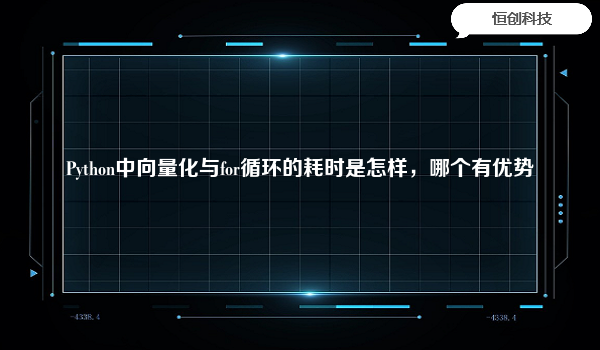
向量化与for循环耗时对比
深度学习中,可采用向量化替代for循环,优化耗时问题
对比例程如下,参考Andrew NG的课程笔记
import time
import numpy as np
a = np.random.rand(1000000)
b = np.random.rand(1000000)
tic = time.time()
c = np.dot(a,b)
toc = time.time()
print(c)
print("Vectorized version: " , str(1000*(toc-tic)) + "ms")
c = 0
tic1 = time.time()
for i in range(1000000):
c += a[i]*b[i]
toc1 = time.time()
print(c)
print("For loop version: " , str(1000*(toc1-tic1)) + "ms")
处理百万数据,耗时相差400多倍。
效果图:
向量化数据的相比于for循环的优势
例子
import numpy as np import time a = np.random.rand(1000000) b = np.random.rand(1000000) tic = time.time() c = np.dot(a,b) toc = time.time() print© print(“vectorized version:” + str((toc-tic))+“s”) c1 = 0 tic = time.time() for i in range(1000000): c1 += a[i]*b[i] toc = time.time() print(c1) print(“Nonvectorized version:” + str(toc-tic)+“s”)
结果
250487.97870397285
vectorized version:0.002000093460083008s
250487.9787039739
Nonvectorized version:0.957054615020752s
可以看出向量化后执行时间比使用for循环快478倍
以上就是关于“Python中向量化与for循环的耗时是怎样,哪个有优势”的介绍了,感谢各位的阅读,如果大家想要了解更多相关的内容,欢迎关注恒创科技,小编每天都会为大家更新不同的知识。






.png)

.png)

